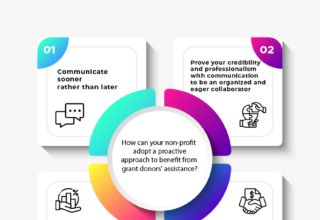
Matchday programmes used to be the place to find out the two teams, discover what your left-back’s favourite film was, or see which local companies were offering a 10% discount when you visited with your copy.
Nowadays you can use your paper programme to watch videos… straight from the page.
It might sound like magic, but a forward thinking semi-professional club from West Yorkshire are making it a reality.
Supporters of Frickley Athletic, who play in the eighth tier of English football, can hover their smartphone over a page in the programme to watch match highlights which are often inaccessible for fans of non-league football.
The club’s programme sales have increased since it was introduced at the start of this season, leading to interest from Football League outfits as they explore ways of sustaining a tradition of the game which is coming under increasing pressure from new forms of media.
“I’m a football traditionalist – programmes need to be in football,” says Chris Medwell, co-editor of Frickley’s programme.
“This is a good way of keeping them alive. If league clubs with more money want to use this technology then the options are endless.”
So how is Frickley making this ‘magic’ happen? Can it keep the matchday programme alive? And what else could fans see pop up on the page?
From Pokemon Go to non-league football
Augmented reality. Never heard of it? The chances are you have used it, or know someone who has.
That’s because Pokemon Go – the mobile game that blends the real world with computer graphics played by millions across the world – is the most high-profile example.
Augmented reality (AR) is all about enhancing the view of the real world with computer graphics, allowing users to experience it on a smartphone through an app that uses the camera and sensor to overlay information on to the real-world view.
“Augmented reality is a developing tech which has been around for 10-15 years in different forms, but is now taking more of a consumer approach,” says Liam Foy, head of social at Bolton-based digital marketing company Bring Digital.
“The big Silicon Valley companies, including Facebook, Snapchat and Instagram, all use it to an extent.”
Medwell, a special educational needs (SEN) lecturer at Doncaster College, started using the technology to engage his teenage students and improve their learning experience.
“It helped them take ownership of their learning because it is more interactive,” he says. “Because they thought it looked like ‘magic’, they found it really engaging.
“When I was asked to co-edit the Frickley programme, I thought it would lend itself perfectly to football.”
Using free web-based software, Medwell creates a ‘trigger image’ which is printed on to a page in the programme and recognised by a smartphone app to play the video – filmed by his SEN students – on screen.
Frickley supporters simply have to download the free app, pay £2 for their programme and then watch.
How can non-league clubs benefit?
Clubs down the English league pyramid, particularly the semi-professional ones outside of the Football League, face a constant battle to keep the books balanced as they operate on relatively small incomes.
Frickley, like all Evo-Stik League clubs, are required by the league to produce a matchday programme.
“A programme is a labour of love and often a drain on resources,” says Medwell. “They aren’t cheap to put together and take a lot of time for a volunteer.”
Frickley, based in the former mining village of South Elmsall near Wakefield and with an average attendance of about 300, introduced the concept for their opening home match of the season against Cleethorpes and sold out of programmes.
They increased the print run for their next game – and sold out again.
Medwell adds: “This is a different way of attracting the attention of fans and it is really engaging them.”
Frickley say the cost-free feature has caught the imagination of fans who – unlike their Premier League and Football League counterparts – do not have instant access to match highlights through websites and social media.
“Everyone in the town is talking about it,” says Michael Johnson, a volunteer who works as Frickley’s media manager.
“The response has been amazing and the interest is taking the club places it has not been before – not for a lack of trying, just time and cost.”
That exposure – boosted by increased sales – has opened up commercial opportunities with local companies expressing interest in putting video adverts in the programme.
“Cost is a massive thing for a club like ours, but we have no parameters on ideas and creative thinking,” adds Johnson.
“Now we have been able to do it through technology and it is proving to be a massive tool, asset and resource for us.”
Player interviews & touch maps – other ways AR could engage fans
Other non-league teams, keen to discover new ways of boosting programme sales and engaging fans, have contacted Frickley to tap into their knowledge, while a Championship club have also been in touch.
While Frickley use AR to show match highlights, this might not be a selling point for fans higher up the pyramid who can watch more established broadcasts, such as Match of the Day, through apps on their mobile phone.
“One of the key areas to getting football fans using it is added some sort of value to the content,” says Foy.
“In the instance of match highlights, this is a great opportunity for lower-league clubs who can’t get highlights on a regular basis.
“It could also be used to show exclusive interviews with players, managers or ex-players, or to present data and stats – for example, touch maps or pass percentages.”
- How Man Utd have used augmented reality
Foy believes more clubs, especially Premier League sides, will start to use AR as they look for new ways to engage with fans.
“The big clubs could probably build AR technology around the stadium so fans could go to certain points, be able to interact with it and find out more information,” he says.
“This could work, for example, on stadium tours and deliver history about the club and stadium through your phone so you’re not just standing there.
“Social media is changing in terms of algorithms and content is not always being seen by people, so AR could provide another opportunity to get content and information to fans.
“The key difference here is that it gets fans interacting rather than just sitting and consuming.”
Matchday programmes continue their battle to evolve
When football programmes were introduced in the late 19th Century, their main purpose was providing the two teams and a space for fans to write down the final result and goalscorers.
After the Second World War, they became a source of revenue through advertising and developed into a way of engaging with fans through manager columns, player interviews and statistics.
Anecdotal evidence seems to suggest sales of football programmes are falling, in an age where most youngsters are digital savvy.
But Chris Mortley, editor of Leicester City’s programme, says the 2015-16 Premier League champions have experienced record sales in recent seasons as fans seek souvenirs of days they never thought they would see.
The Foxes’ pre-season game against a Real Madrid side containing Cristiano Ronaldo and managed by Jose Mourinho in 2011 produced, at the time, the biggest selling programme in the club’s history.
Since then, two further editions have broken this record – the first home fixture of the 2014-15 Premier League season and on the day City lifted the Premier League title in May 2016.
“Naturally, the print run does increase for big games, whether that be against a big-name Premier League club, key matches or memorable occasions,” says Mortley, communications manager at Soar Media.
“For example, some of the highest print runs of last season were for the Champions League games at King Power Stadium.
“The club really do value the matchday programme and look to ensure that it reflects big occasions for the club.”
The programme industry, like all forms of media, is constantly evolving and looking for ways to attract new audiences.
“There was talk a few years ago to have programmes not in paper form but on a cassette in portable audio players. This never materialised,” says Steve Earl, a football programme expert.
“Some league clubs have tried to introduce bar codes you can scan in the programme for further information, but at the time it didn’t prove popular.
“However, with mobile phones now being able to do everything it will be interesting to see how Frickley’s venture progresses.”
Source:_BBC






